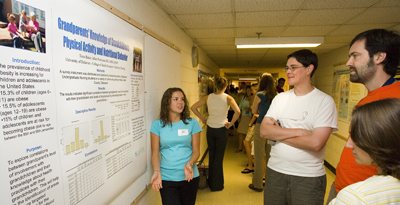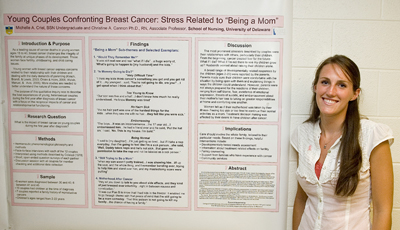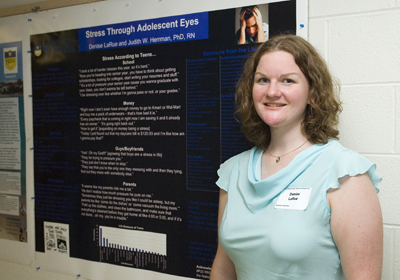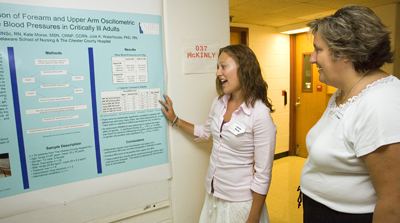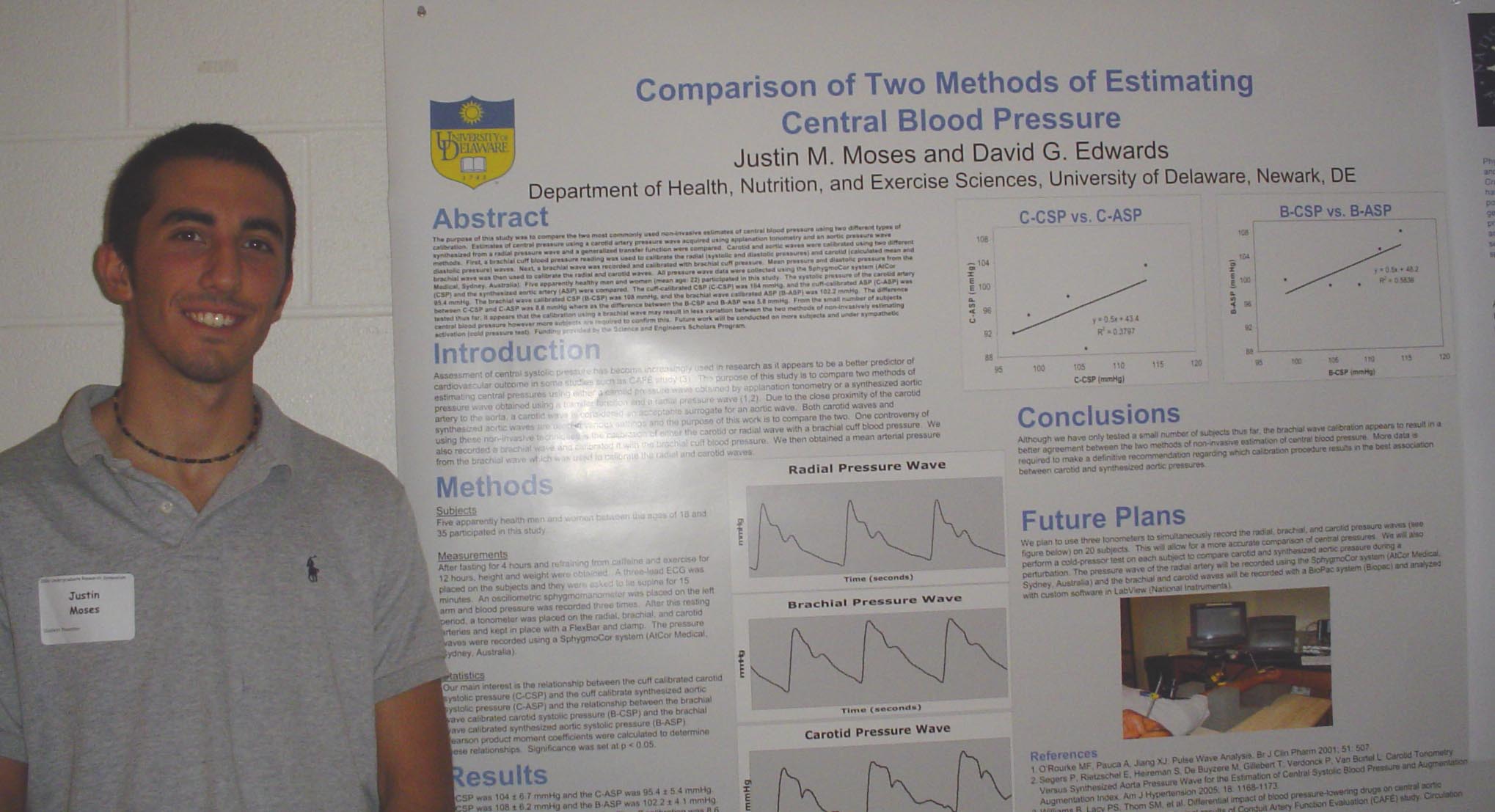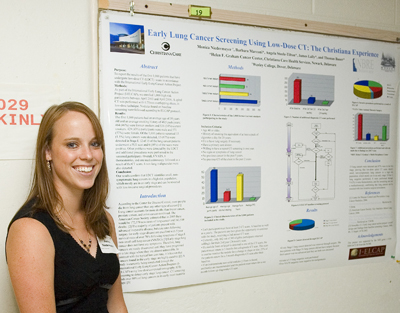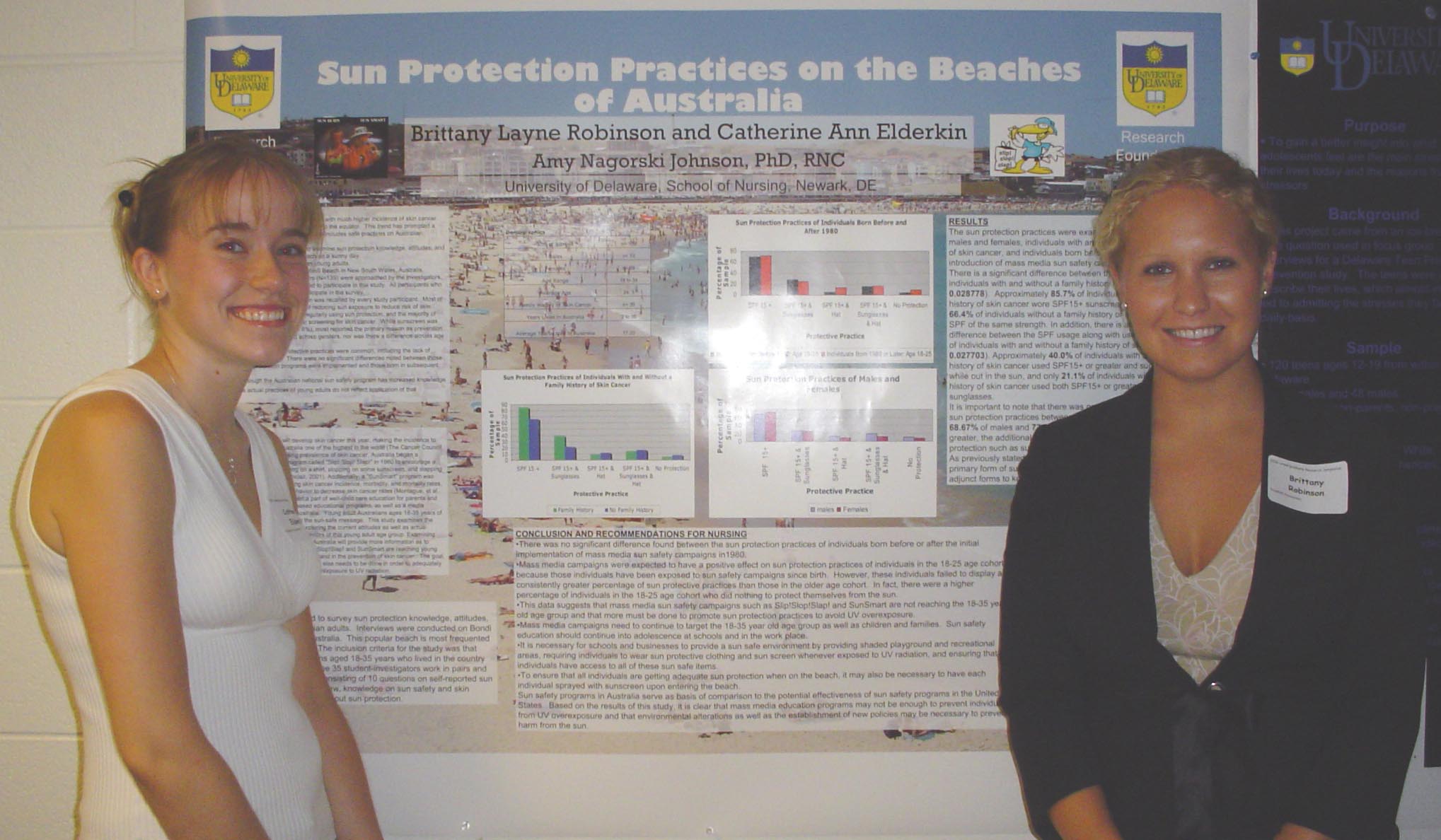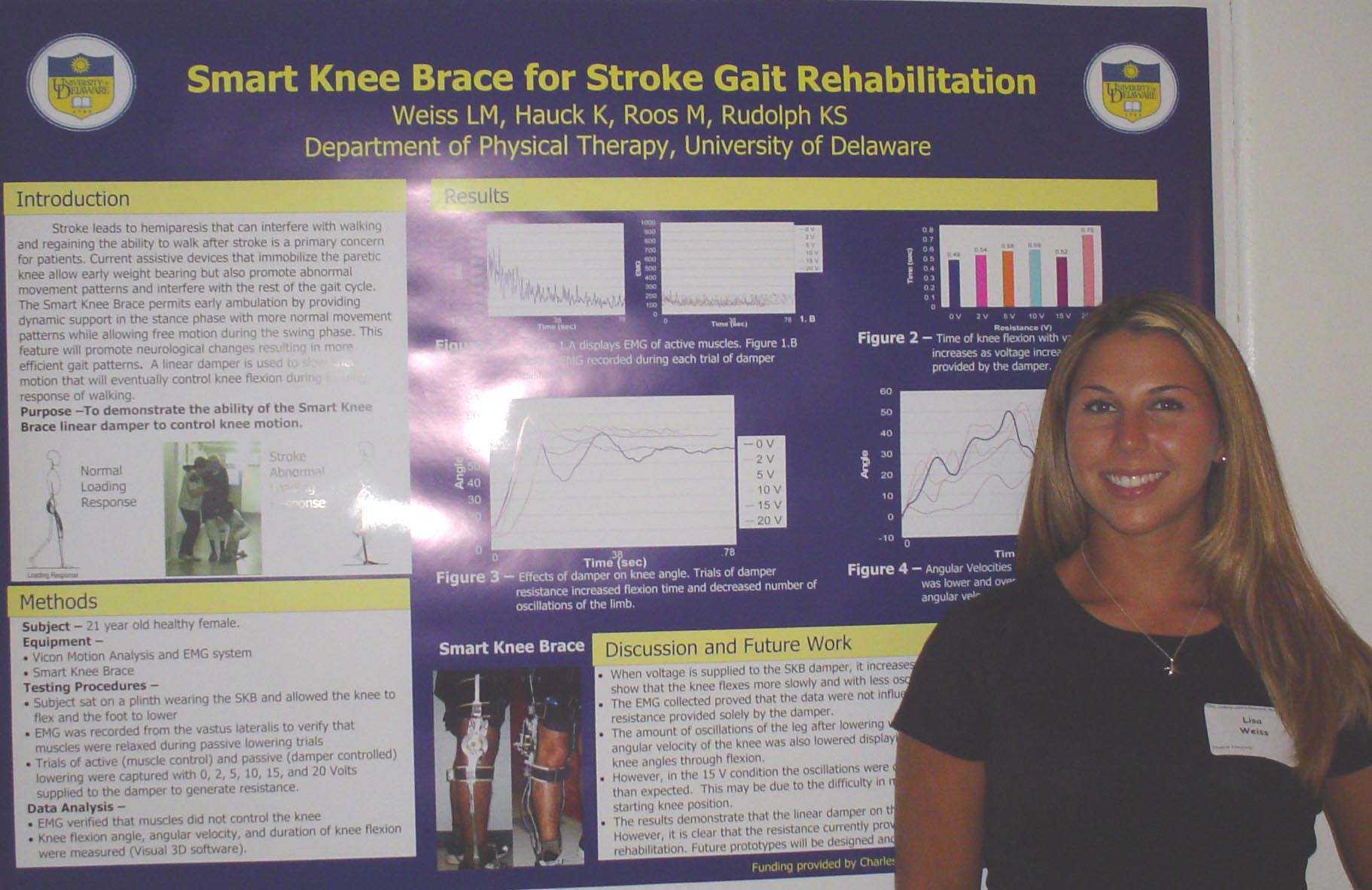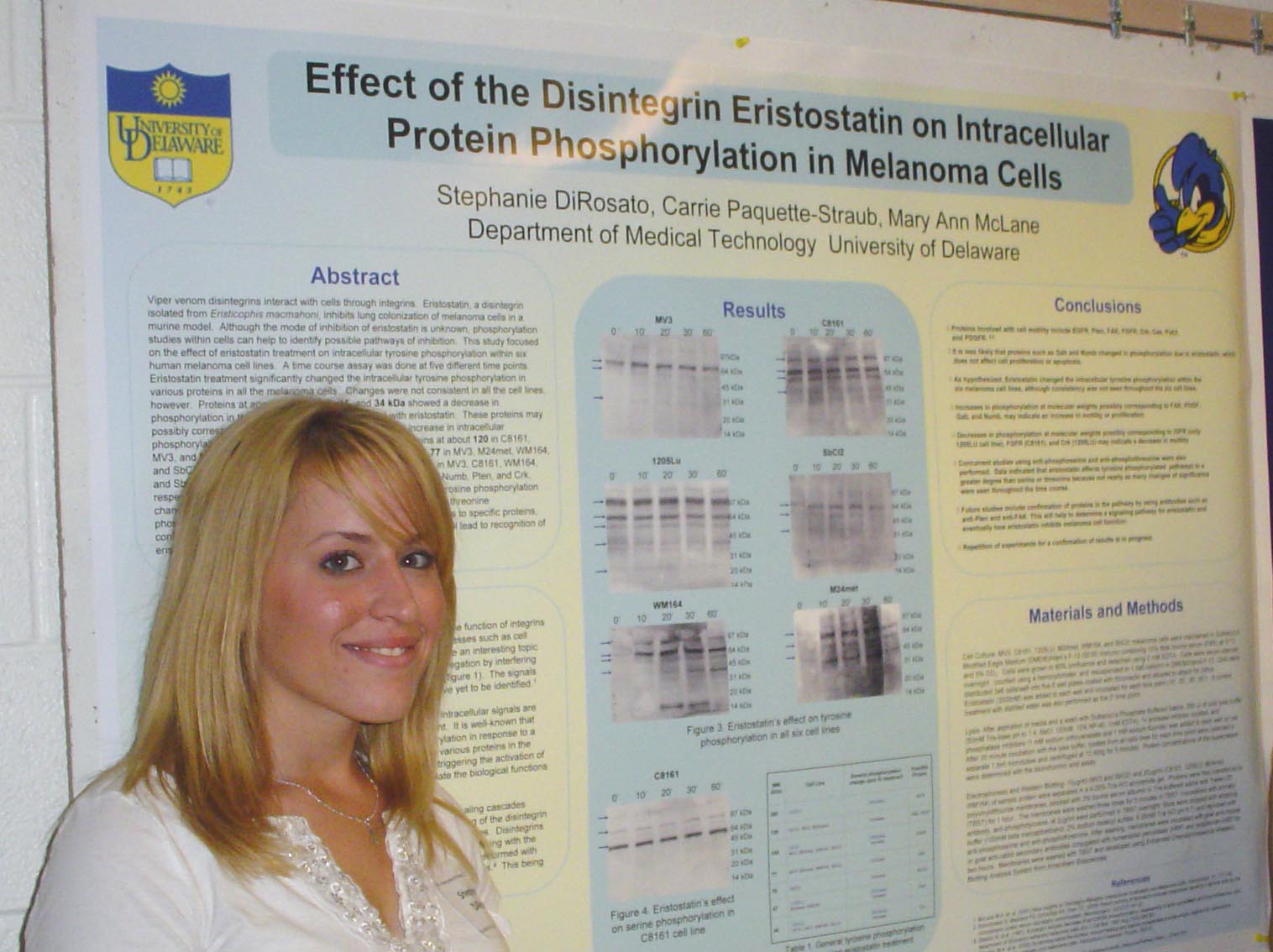
Effect of the Disintegrin Eristostatin on
Intracellular Protein Phosphorylation in Melanoma Cells
Stephanie DiRosato, Carrie Paquette-Straub, and Mary Ann
McLane
Department of Medical
Technology
Viper venom
disintegrins interact with cells through integrins.
Eristostatin, a disintegrin isolated from Eristicophis
macmahoni, inhibits
lung colonization of melanoma cells in a murine model.
Although the mode of inhibition of
eristostatin is unknown, phosphorylation studies within cells can help
to
identify possible pathways of inhibition. This
study focused on the effect of eristostatin treatment
on
intracellular tyrosine phosphorylation within six human melanoma cell
lines. A time course assay was done at
five different time points. Eristostatin
treatment significantly changed the intracellular tyrosine
phosphorylation in
various proteins in all the melanoma cells. Changes
were not consistent in all the cell lines, however.
Proteins at approximately 240, 45, and 34 kDa
showed a decrease in
phosphorylation in the 1205LU cell line when treated with eristostatin. These proteins may possibly correspond to
proteins IGFR, Pten, and Crk. An
increase in intracellular phosphorylation with eristostatin treatment
was seen
in proteins at about 120 in C8161,
MV3, and M24met, 100 in MV3, M24met,
WM164, and SbCl2, 77 in MV3, M24met,
WM164, and SbCl2, 70 in SbCl2, 47 in
M24met and WM164, and 34kDa in MV3, C8161, WM164, and
SbCl2.
These may correspond to proteins FAK, FGFR, Gab, Numb, Pten, and Crk,
respectively. Unlike the wide variety of
proteins that exhibited a tyrosine phosphorylation change,
significantly fewer
proteins showed changes in serine and threonine phosphorylation after
treatment
with eristostatin. By using antibodies to specific proteins,
confirmation of
proteins in the signaling pathway can begin. This
will lead to recognition of eristostatin’s mechanism
of melanoma
cell activity. Funding provided by University of Delaware Science and Engineering
Scholarship (SD) and the National Cancer Institute (CA098056, MAM).
